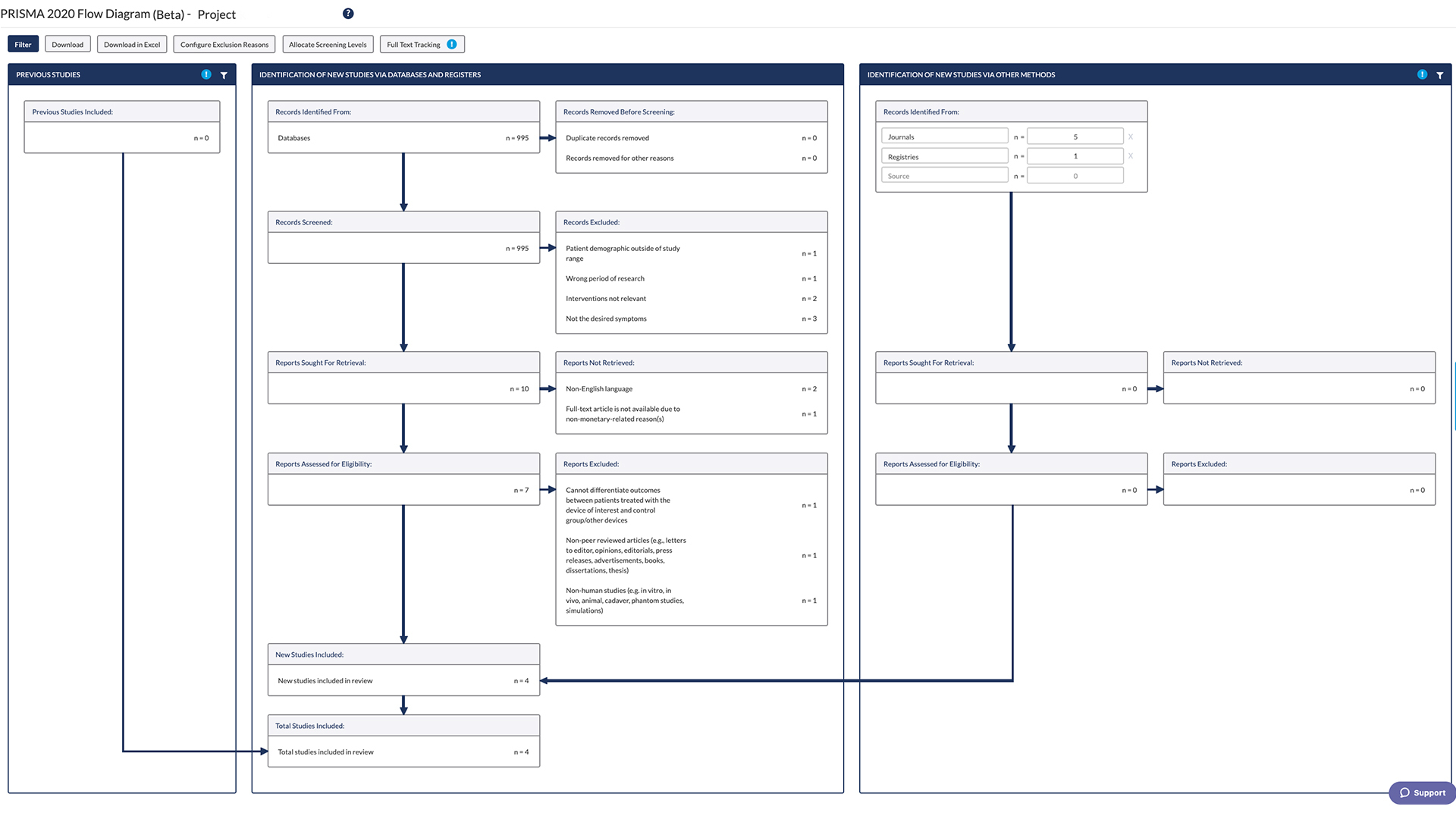PRISMA 2020 Systematic Review


Automate every stage of your literature review to produce evidence-based research faster and more accurately.
There has been a steady rise in the number of systematic reviews (SRs) published over the last 20 years. However, a substantial number of these systematic reviews are poorly conducted and poorly reported. To address this problem, the PRISMA statement was published.
What Is PRISMA?
The PRISMA methodology for systematic review was designed for authors, journal editors, and peer reviewers. PRISMA helps authors improve the reporting of systematic reviews and meta-analyses. For editors and reviewers, PRISMA can be a useful tool for to critically appraise systematic reviews submitted for publication.
PRISMA was first published in 2009, and was developed to help systematic reviewers transparently report why the review was conducted, what the authors did, and what they found. However, after more than a decade of advances in systematic review methodology and terminology, PRISMA published updated guidelines, PRISMA 2020. For more on the difference between both versions of PRISMA guidelines, check out our article on PRISMA 2009 versus 2020.
Using PRISMA For Systematic Review
The PRISMA research tool is not used to conduct systematic reviews, but helps authors ensure the transparent reporting of systematic reviews. To discover the answer to a precisely stated research question, a systematic review will thoroughly scan all articles published on the subject – PRISMA is used to report on that process.
The PRISMA 2020 statement includes new reporting guidelines that take into account improved techniques for finding, choosing, evaluating, and synthesizing studies. The PRISMA 2020 statement was published as a suite of 3 papers:
- A statement paper made up of the 27-item checklist, an expanded checklist with detailed reporting recommendations for each checklist item, the PRISMA 2020 abstract checklist, and the revised flow diagram
- A development paper that details the procedures followed to update the PRISMA 2009 statement and provides the justification for changes made to the original items
- An updated explanation and elaboration of PRISMA 2020
The PRISMA Checklist
Utilizing PRISMA to conduct systematic reviews involves using the PRISMA 2020 statement and its extensions to write a review report. The checklist covers all aspects of the manuscript, including the title, abstract, introduction, methods, results, discussion, and funding. The PRISMA checklist can be downloaded as a PDF or Word file.
PRISMA has also published a paper explaining the use, understanding, and dissemination of the PRISMA 2020 statement. In this document, you will find examples and explanations for each checklist item.
Learn More About DistillerSR
(Article continues below)
The PRISMA Flow Diagram
The PRISMA flow diagram (or flowchart) visually represents the reviewers’ process for locating published data on the subject, and how they chose whether or not to include it in their review. It is typically the first figure in the results section of a systematic review.
The PRISMA flow diagram describes 4 phases – identification, screening, eligibility, and inclusion. It can take time to learn how to do a PRISMA flow diagram, but the results are worth it.
If you use the PRISMA checklist and flow diagram, reviewers and readers of your work are much more likely to know how you conducted your research and what you discovered.









